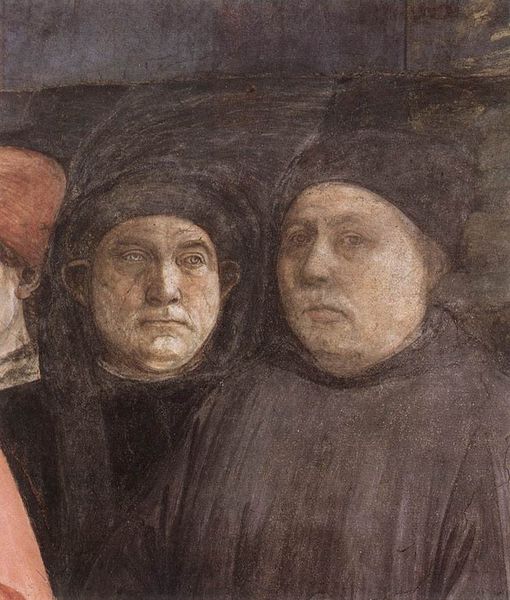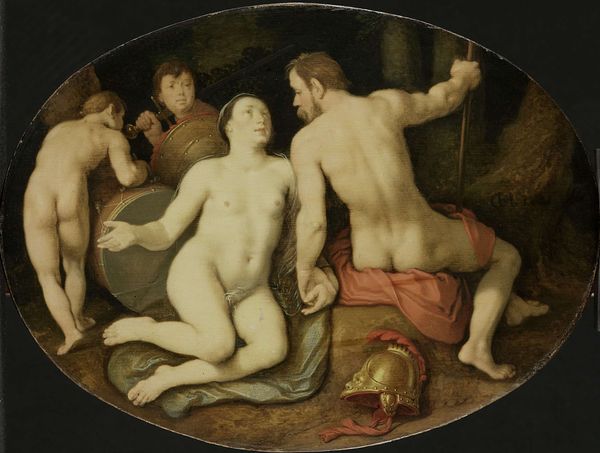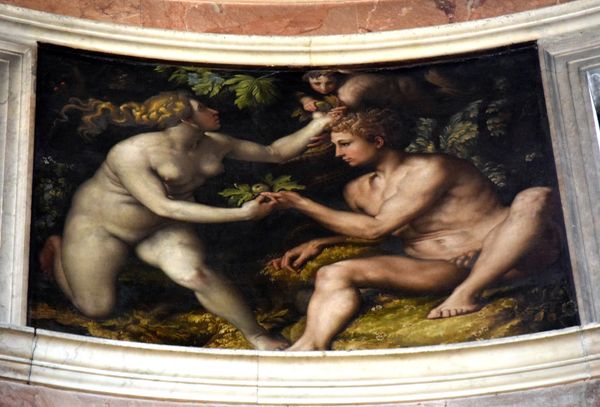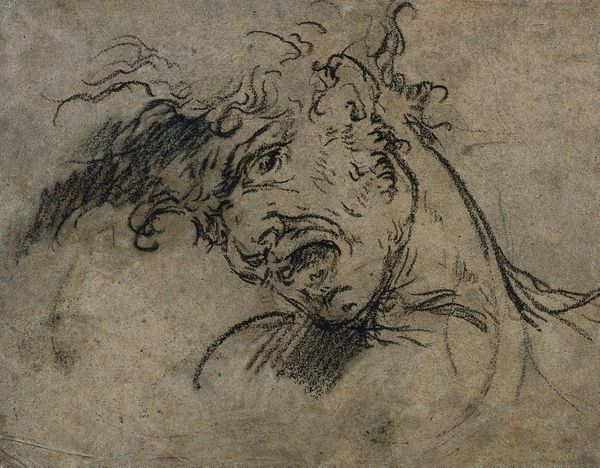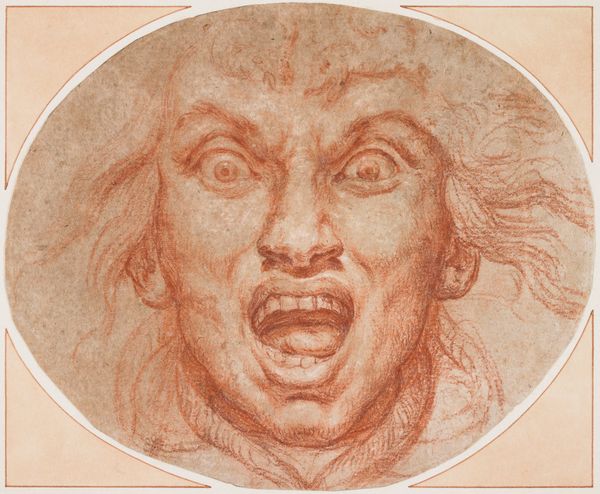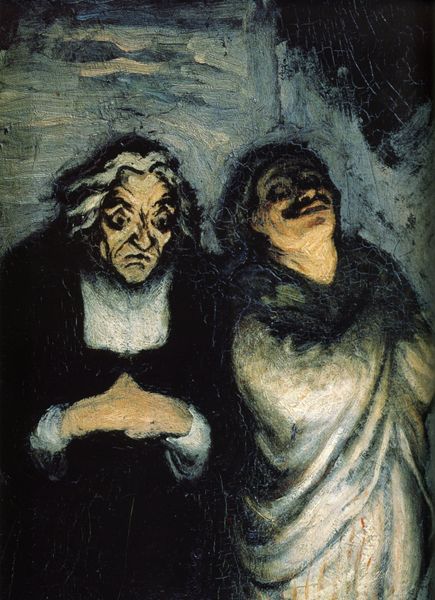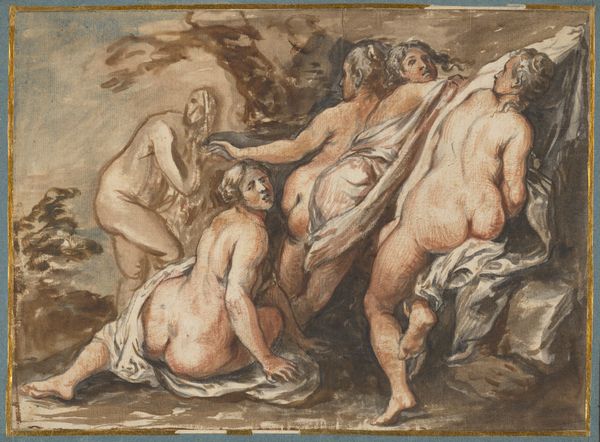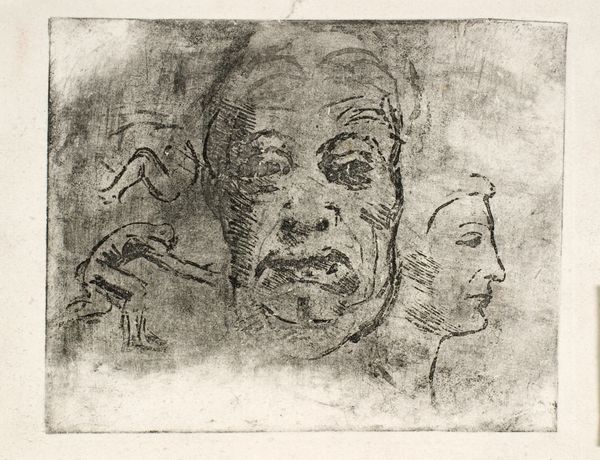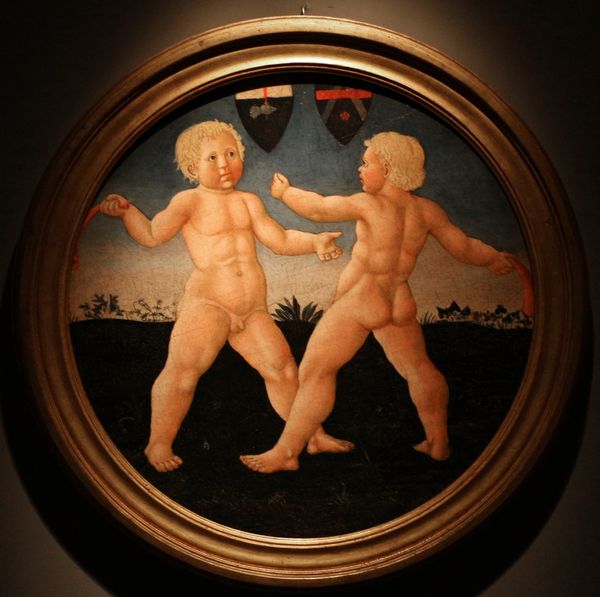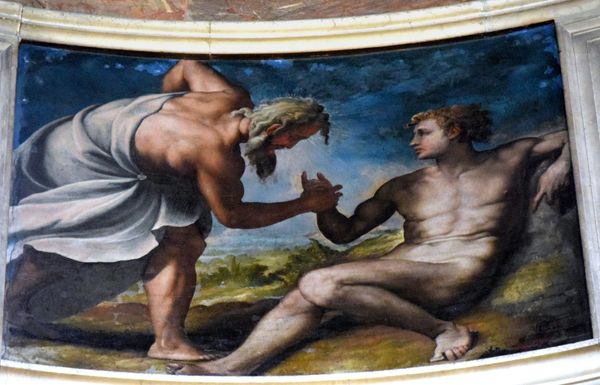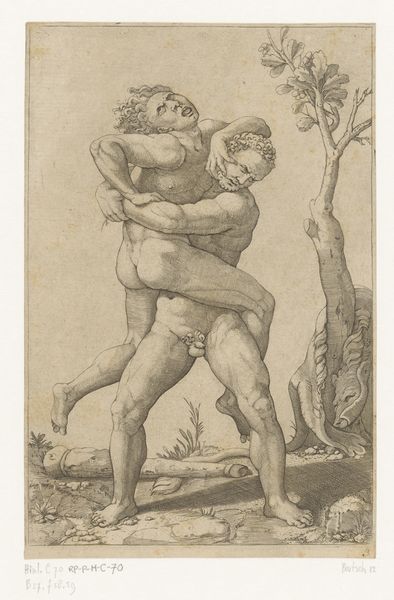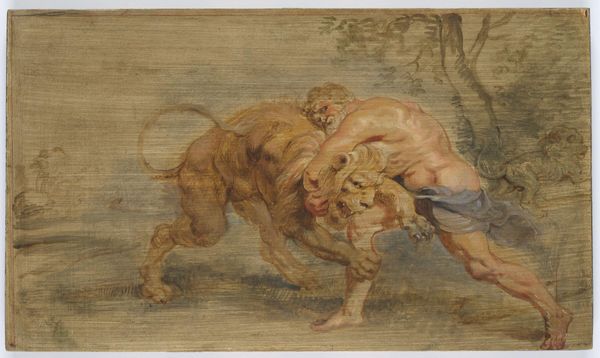
panel, painting, oil-paint, wood
#
portrait
#
panel
#
painting
#
oil-paint
#
charcoal drawing
#
figuration
#
11_renaissance
#
oil painting
#
wood
#
northern-renaissance
Dimensions: 25 cm (height) x 34 cm (width) (Netto), 64 cm (height) x 74 cm (width) (Brutto)
Editor: Pieter Bruegel the Elder’s painting "The Strife Between Carnival and Lent," crafted around 1559 with oil on a wood panel, has such a striking texture. What strikes me most is the obvious contrast between the figures - some round and jovial, others gaunt and severe. How do you interpret this piece? Curator: I see it as a fascinating commentary on material culture and social practice. Notice how Bruegel employs the medium of oil paint to distinguish between the two sides. The Carnival figure is rendered with broader strokes, a visible build-up suggesting abundance and indulgence. Conversely, the Lent figures appear almost etched, revealing the wood panel underneath, implying scarcity. What does this tell us about the role of materiality in defining these social roles? Editor: So, the very substance of the artwork mirrors the economic realities and cultural values attached to these figures? Curator: Precisely. Consider the societal pressures surrounding consumption during the Renaissance. Lent dictated restraint, a reduction in material desires, impacting trade, labor, and daily life. Carnival, in contrast, represented a temporary subversion of these norms, a brief economic boom fueled by excess. The very act of painting this scene becomes a material engagement with these tensions. What impact could the choice of panel wood versus canvas have had? Editor: Wood suggests perhaps a connection to traditional craft and maybe a sense of permanence or established order that Canvas would subvert? Curator: Indeed! Furthermore, think about the pigments available to Bruegel, sourced from specific regions and impacting the overall palette. Every element speaks to the material conditions of 16th-century Europe and influences meaning. Editor: That’s fascinating, framing the painting less as a symbolic representation and more as a material document of its time. Thank you for this interpretation! Curator: It's a reciprocal understanding. Thinking about materials has opened fresh dialogues about an apparent topic.
Comments
Join the conversation
Join millions of artists and users on Artera today and experience the ultimate creative platform.
statensmuseumforkunst over 1 year ago
⋮
An emaciated couple with sunken cheeks and jutting cheekbones are contrasted with a well-fed monk. One of the two has already bitten down on the monk's ample cheek, while the other is preparing to bite, mouth open. The image is grotesque and amus ing, but it also directs an overt critique against the Catholic Church, accusing it of voluptuousness and greed at the expense of the poor. The motif can be traced back to 13th century North ern European popular culture. It represents the changeover from the cheerful times preceding Ash Wednesday, full of parties and carnival, to the upcoming 40-day soberness of Lent. Bruegel is regarded as one of the pre-eminent painters of his era. With a keen eye for the Dutch landscape and for the events, big and small, of everyday life he would stage many narratives, frequently with a moral message.
statensmuseumforkunst over 1 year ago
⋮
Pieter Bruegel the Elder was one of the greatest artists of 16th century Europe. Renaissance humanism and Netherlandish painting His works spring equally from the Renaissance humanism of his own era and early Netherlandish painting, particularly the work of Hieronymus Bosch (ca. 1450-1516). One might say that Bruegel translated Bosch’s religious and nightmarish imagery into a folklorist profane version. Contrast between the riotous days and the Lent The Strife of Lent with Shrove-Tide thematises the contrast between the riotous days prior to Ash Wednesday and the next 40 days of Lent concluded by Easter Day. The theme has its roots in Flemish folklore dating all the way back to the 13th century. In his work, Bruegel puts a new spin on the allegory of the two extremes: one that lets the grotesque and anti-clerical take centre stage. The history of the painting The painting is first mentioned in an inventory from 1718, listing it as part of a cabinet of curiosities in the Winter Parlour at Rosenborg. Here it was displayed alongside other paintings in a cabinet containing objects both natural and man-made. It was painted using a watercolour-like technique that Bruegel presumably learnt while working in Mechelen in 1550-51.
